Kidman cattle get their marching orders in self-herding trial
An MLA-funded trial has begun at the NT Government’s Victoria River Research Station (also known as Kidman Springs) which aims to encourage cattle to go where the grass is greener.
Stock in the test paddock at the Victoria River site are being tempted with tasty treats to change their grazing behaviour. If all goes well the trial will demonstrate that given the right incentives cattle can herd themselves, resulting in lower costs for producers and good production outcomes.
“It would be a win for the landscape and for the pastoralist – and ultimately for the bottom line”, said Dean Revell, the agricultural scientist from WA who has developed the suite of self-herding methods with a NSW farmer specialising in stress free stockmanship Bruce Maynard.
“During initial trials on a number of stations in WA, we saw the exciting possibility of achieving grazing management benefits without huge infrastructure set-up costs. And the potential to reduce mustering costs is high,” Bruce said.
Traditionally whole paddocks have to be closed off when land needs to rest and recover – or fencing has to be erected to section off out-of-bounds areas. That’s costly in labour and materials and isn’t easily adjusted over time as seasonal conditions and regeneration patterns dictate.
The self-herding trial aims to create new grazing behaviours which will encourage the stock to find their own way to new areas, giving a boost to the animals’ nutrition and allowing the overused areas to recover. The trial is with cattle, but the methods are equally relevant to other livestock.
Back in March the project team identified the perfect site at Kidman Springs; the entire paddock is already routinely spelled from grazing during the wet season to reverse the effects of historical overgrazing in one particular area,
“It presents an ideal opportunity to test the concept at paddock scale and will address industry-relevant issues such as how to increase the portion of a paddock that is used sustainably for grazing - and minimise overgrazing of sensitive patches within a paddock,” Dean said.
The fun began last month: before being led to the test paddock, cattle were introduced to nutritional rewards and other attractants in a location familiar to them. Now that they are in the paddock their behaviour is being monitored and their movements are being tracked. The attractants include high-nutritional value pellets, mineral lick, cracked lupins, barley, coarse salt and ‘Bruce’s brew’, which is a blend of ash and charcoal from burnt timber. By varying the rewards, the animals’ interests are heightened – a bit like a kid at lolly shop who is hoping they get something from the offering.
“A group of cattle in the trial have been fitted with GPS devices and, combined with observations and feed utilisation patterns, we’ll test if animal use of targeted areas is increased by Self Herding methods," Dean said.
“Cattle performance will be assessed by monitoring body weight and body condition.”
“It’s an exciting, cutting-edge concept with so much potential for the techniques to become ‘business as usual’", said Mel McDonald from Territory NRM’s Katherine office.
“The emphasis on low environmental impact, cattle health and sustainability tick all the boxes for sound natural resource management. We are thrilled to be on board.
“It'll be a huge win if we can learn ways to regenerate land without the need to install expensive infrastructure or take good pasture out of production by locking up a whole paddocks to spell sensitive areas."
Territory NRM is coordinating communications for the self-herding trial as one of six partners in this unique collaboration, funded by MLA with support from the NT Government.
Local producers will be able learn more about the trial at the Kidman Springs Field day on 15 August.
The team will also be making a presentation at the TNRM Annual Conference in Darwin in November.
More information: Territory NRM



